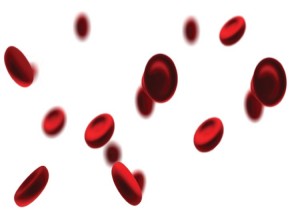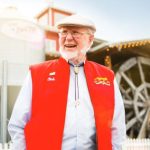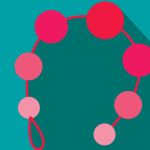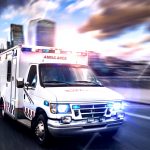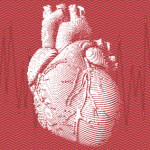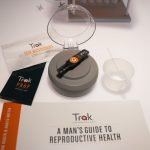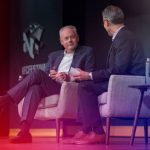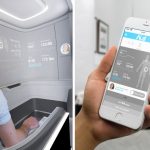At Hematological assembly, more than simply Biotech knowledge Runs Blood crimson

[Editor’s be aware: Deputy Biotechnology Editor Ben Fidler co-wrote this story.] The annual American Society for Hematology meeting, held this yr in Orlando, FL, ends today. The assembly is a showcase for brand new data, medicine, and techniques to deal with cancers like leukemia, rare genetic illnesses, and different maladies that originate in or in any other case affect blood.
however ASH also highlights classes in investor psychology. remaining yr, at the conference in San Francisco, robust early knowledge in new remedies for blood cancers and beta thalassemia helped buoy an already bullish market for biotech.
This 12 months, biotech markets are depressed, and investors are in no temper to look glasses half of full, punishing companies for now not meeting unrealistic expectations, or, it seems, for simply being biotech firms. On Monday, the biotech indices fell two to 3 p.c, ahead of getting better a little this morning.
One downside: applications that confirmed great early information in 2014 are a year older, with more sufferers to deepen the pattern size. Inevitably, a few of those applications would come back to Earth—the same approach a baseball player who has successful in each two April at-bats isn’t going to stay at .500 all yr.
on this roundup, we spotlight the large ASH moments of the earlier three days and provide context for new traits relating to some of the most important technologies and blood diseases.
automobile-T immunotherapy
an enormous driver for biotech enthusiasm in 2014 and much of this year had been early results in new treatment options referred to as automotive-T—chimeric antigen receptor T cell—that use modified T cells to assault a patient’s most cancers.
One month ago, an ASH summary published that a car-T therapy helped beat back the leukemia of a British newborn who used to be at death’s door. The intervention got here as a special request via the fogeys, not as a part of a clinical trial, but the treatment, UCART19, developed by way of French firm Cellectis (NASDAQ: CLLS), must enter testing soon within the hands of Cellectis’s bigger companions Servier and Pfizer.
(The docs who gave UCART19 to the younger girl were scheduled to existing their case learn about at ASH Saturday, but there used to be no information protection.)
UCART19 is an allogeneic or “off the shelf” T cell treatment, which means that the T cells were extracted from donors, modified in a lab, and given to the affected person. To steer clear of an immune mismatch, which might kill the recipient, and add other capabilities, UCART19 comprises T cells whose DNA is edited three alternative ways, the first use of a gene edited cell to treat most cancers.
however many of the earlier year’s excellent news for car-T got here in section 1 trials from autologous, or personalized applications in which the T cells are accumulated straight away from a patient. They have been run by or licensed to Kite Pharma (NASDAQ: KITE), Novartis (NYSE: NVS), and Juno Therapeutics (NASDAQ: JUNO). In a trial run by way of Juno’s companion Seattle youngsters’s hospital, as an example, 20 of twenty-two kids had their acute lymphoblastic leukemia go into full remission.
That was the spring. Monday, regardless of releasing rather certain news, Juno shares took a tumble of greater than 7 %, or $ 3.79, although its tutorial collaborators endured to indicate large majorities of patients with determined cancers having positive responses to its modified T cell therapies.
the enormous difference between ASH 2015 and 2014 for Juno: a statement from the corporate that sufferers with blood-borne cancers would get a powerful aggregate of chemotherapy drugs to bash the most cancers—“preconditioning” is the clinical term—prior to unleashing Juno’s most cancers-killing T cells. Preconditioning has been studied for some time with T cell therapy; this small American-Swedish joint find out about drew some attention prior this 12 months.
however section 1 trials, run via Juno collaborator Cameron Turtle of the Fred Hutchinson cancer analysis heart in Seattle, showed patients with non-Hodgkin lymphoma and continual lymphocytic leukemia fared better when receiving fludarabine and cyclophosphamide, two chemotherapy medication, earlier than the JCAR014 T cell treatment.
Juno chief financial officer Steve Harr instructed Xconomy the double dose of chemo could be applied “broadly throughout our portfolio, at least in [hematological] malignancies.”
“I do not want to decrease the chemo, however it’s generally a single course and neatly tolerated,” Harr wrote in an e mail. “it is one thing that we need to work to get rid of over time, however [we] don’t see it limiting us, as a minimum within the sufferers we are treating these days.”
Harr said Juno is also evaluating the affect of the chemo combination on sufferers within the 90-particular person segment 2 trial it recently began with JCAR015, any other considered one of its cell remedies, in adults with acute lymphoblastic leukemia. Juno hopes to make use of that JCAR015 trial data to ask the FDA for advertising approval.
the only car-T software ahead of Juno’s JCAR015 is from Novartis, which nabbed the college of Pennsylvania as its exclusive accomplice in 2012 and touched off the stampede into the realm. At this year’s ASH, Novartis become the primary to record segment 2 automotive-T data, from its CTL019 remedy for patients with sure relapsed or refractory non-Hodgkins lymphoma (NHL). Three months after treatment, 15 of 26 patients throughout two subtypes of NHL showed some more or less response. Six of them had a partial response that changed into an entire response—no sign of cancer—on the six-month mark. Two other sufferers went backwards, with their
lymphoma returning months later. overall, for sufferers with the relapsed or refractory diffuse huge B-cell lymphoma subtype of NHL, the median time the Novartis treatment stopped the disease from spreading—what’s often called development free survival—was once three months. It used to be eleven.9 months for patients with follicular lymphoma, any other NHL subtype.
Novartis additionally addressed a unique question looming over the car-T space: How will corporations deal with the difficult logistics of autologous treatment options, which can take weeks to supply at a high cost. In an ASH presentation, Novartis claimed it had made a a success transition of the manufacturing know-how from the UPenn tutorial labs to its own business facility in New Jersey.
Gene treatment
Gene remedy—one way of sending genetic instructions into the physique to provide a long lasting, if no longer permanent therapeutic effect—is nearer today than it’s ever been to impacting healthcare. Spark Therapeutics (NASDAQ: once), in any case, will have an FDA-approved gene treatment for a rare form of blindness by this time subsequent year.
again, however, investor pessimism dominated the day for the best-profile gene treatment software at ASH. eventually yr’s assembly, Bluebird Bio (NASDAQ: BLUE) debuted promising knowledge from four beta-thalassemia sufferers, making the corporate a Wall side road darling. these information, along with early results from the first sickle cell affected person given Bluebird’s gene remedy, LentiGlobin, have been a key part of gene remedy’s renaissance the previous few years.
but with Bluebird’s early success came large expectations, rightly or wrongly, that it could cure everybody. That set up a huge fall for Bluebird, which topped out at $194 a share in June and has because misplaced nearly two thirds of that value. last month, when Bluebird released the abstracts for its ASH data, the takeaway was once LentiGlobin was ultimately bumping up towards limits. Some beta thalassemia sufferers weren’t responding in addition to others. Lo and behold, LentiGlobin wasn’t a remedy-all.
As TheStreet.com said this weekend, that trend continued at ASH. Early information from just a few extra sickle cell patients weren’t just about as excellent because the numbers from the first patient, and regardless of Bluebird’s attempts to calm traders with a Sunday night assembly—learn more here at TheStreet.com—the stock bought off in a tremendous method. Bluebird still doubtlessly has a potential, necessary remedy for sickle cell disease or beta thalassemia. For sickle cell patients, there’s little else despite one hundred years documenting the disease.
but it’s a reminder that despite the progress with gene remedy, there’s still lots to be learned, patient through patient, and trial via trial.
more than one Myeloma
The 2nd most common blood most cancers has now not attracted much attention from biotechs pursuing slicing-edge cell or gene cures. more than one treatment options have helped fortify prognosis, and more are coming. just ahead of ASH, the FDA approved three new merchandise, two of which can be antibodies that stimulate the patient’s immune machine. they’re all intended to be used together with previously approved medication and chemotherapies, for sufferers who’ve now not fared well with other therapies.
much of the ASH process situated round those three medicine— daratuzumab (Darzalex), ixazomib (Nintaro), and elotuzumab (Empliciti)—and whether or not they may be able to be used in sufferers whose situations are less desperate.
however there used to be one car-T clinical learn about in myeloma at ASH. it’s still underway at the nationwide most cancers Institute, however thus far, out of 12 patients, 4 have had at the least a partial response to the therapy. One is now in full remission, but now not sooner than getting thru extreme cytokine release syndrome—a dangerous facet impact of T cell treatment options that researchers say they’re studying how to take care of.
As TheStreet.com suggested, learn about chief James Korchenderfer of NCI told the media Saturday that car treatment options can be powerful myeloma treatments, but also poisonous, “so they’ll be used after different remedies and not as front line treatment in the near future.”
That has implications for Bluebird and its companion Celgene (NASDAQ: CELG), which have a deal to increase a next-gen model of the NCI therapy mentioned this weekend.
the current version is called automotive-BCMA, because the patients’ T cells are modified outside their our bodies to attack the BCMA protein on the surface of myeloma cells. The model licensed to Bluebird is known as BB2121, which could enter the medical institution in 2016.
Hemophilia
previous this year we wrote in regards to the emerging gene remedy race in hemophilia. by way of coaxing the physique to produce the clotting issue hemophilia sufferers lack, gene therapy has a possibility to fully change how the illness is handled. at present, sufferers with probably the most extreme kinds of hemophilia get a couple of injections of recombinant proteins referred to as clotting factors every week. The attract of gene treatment is to supply one shot for an extended-term, possibly even everlasting answer.
This yr’s ASH assembly didn’t provide any vital new medical answers on gene therapy as a result of timing. Dutch agency UniQure (NASDAQ: QURE) expects its first hemophilia B ends up in January. Sangamo Biosciences (NASDAQ: SGMO) will commence enrolling patients within the first hemophilia B trial for its gene editing application, SB-fix, next 12 months.
As these gene healing procedures enhance, it’s worth observing fitusiran, a drug from Alnylam prescription drugs (NASDAQ: ALNY) that equipped ASH information. It’s not gene treatment; fitusiran is supposed to help hemophiliacs produce extra thrombin—and standard blood clotting—via RNA interference.
Alnylam has been offering periodic updates from a segment 1 find out about of fitusiran—formerly often called ALN-AT3—in dribs and drabs, with the latest coming at ASH. (See this document from the Boston business Journal for a look at that knowledge).
Alnylam is anticipated to begin late-stage testing subsequent yr. There were encouraging indicators thus far, but durability will be the key question. within the BBJ report, Alnylam chief operating officer Barry Greene urged the drug can be dosed once a month. however will that hold up in a big randomized trial? Will it curtail the necessity for remedy with recombinant factors, and forestall bleeds? if this is the case, will that shrink the prospective marketplace for the gene treatment contenders?
inventory movers
for those who had shorted biotech stocks prior to ASH, likelihood is you possibly can have made a tight sum of money Monday. The NASDAQ Biotechnology Index (NASDAQ: IBB) fell about 2 percent on the day, lowlighted by the plummets of Bluebird Bio (37 %) and Agios pharmaceuticals (22.three %).
a lot of other biotech stocks took a double-digit hit, among them international Blood Therapeutics (17 percent), which updated an ongoing segment half of trial for its as soon as-a-day oral therapy for sickle cell, Cellectis (14 p.c), and Atara Biotherapeutics (sixteen %).
The temper can possibly highest be summed up by way of looking at Bellicum prescribed drugs (NASDAQ: BLCM), a Houston-based developer of engineered T cells. the company lags behind different automobile-T avid gamers in getting most cancers remedies to the sanatorium. but at ASH this weekend, it mentioned information that confirmed one of its T cell traces helped children with rare blood diseases—similar to beta thalassemia and the severe immune depletion often called “bubble boy” disease—get better sooner after receiving a bone marrow transplant. Small affected person pattern, early stage knowledge, but in better days, enough likely to create optimism for the corporate’s pipeline. As of this writing, Bellicum shares are down 15 percent from their excessive mark Friday prior to the conference began.
(48)

